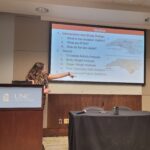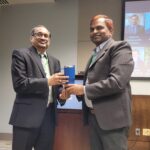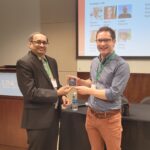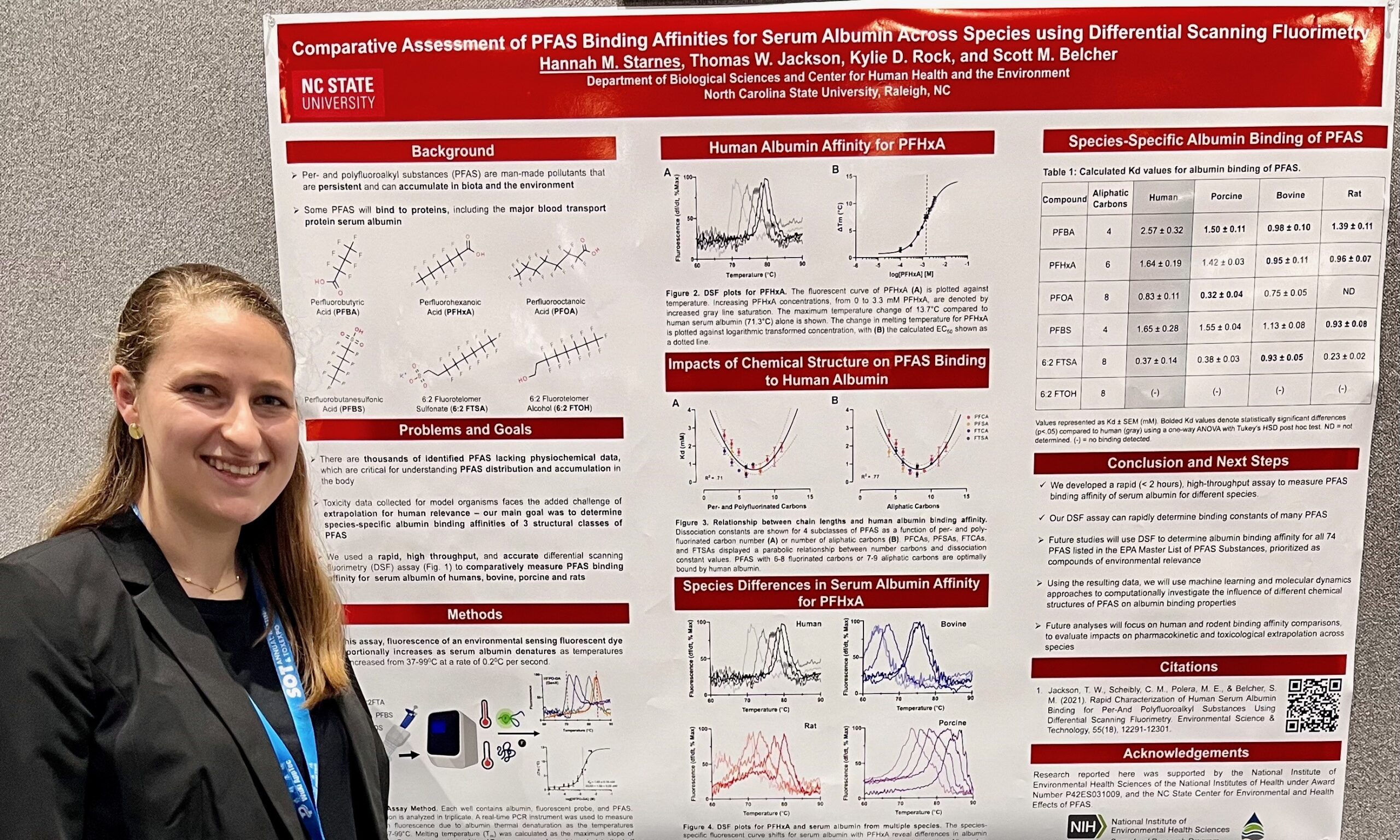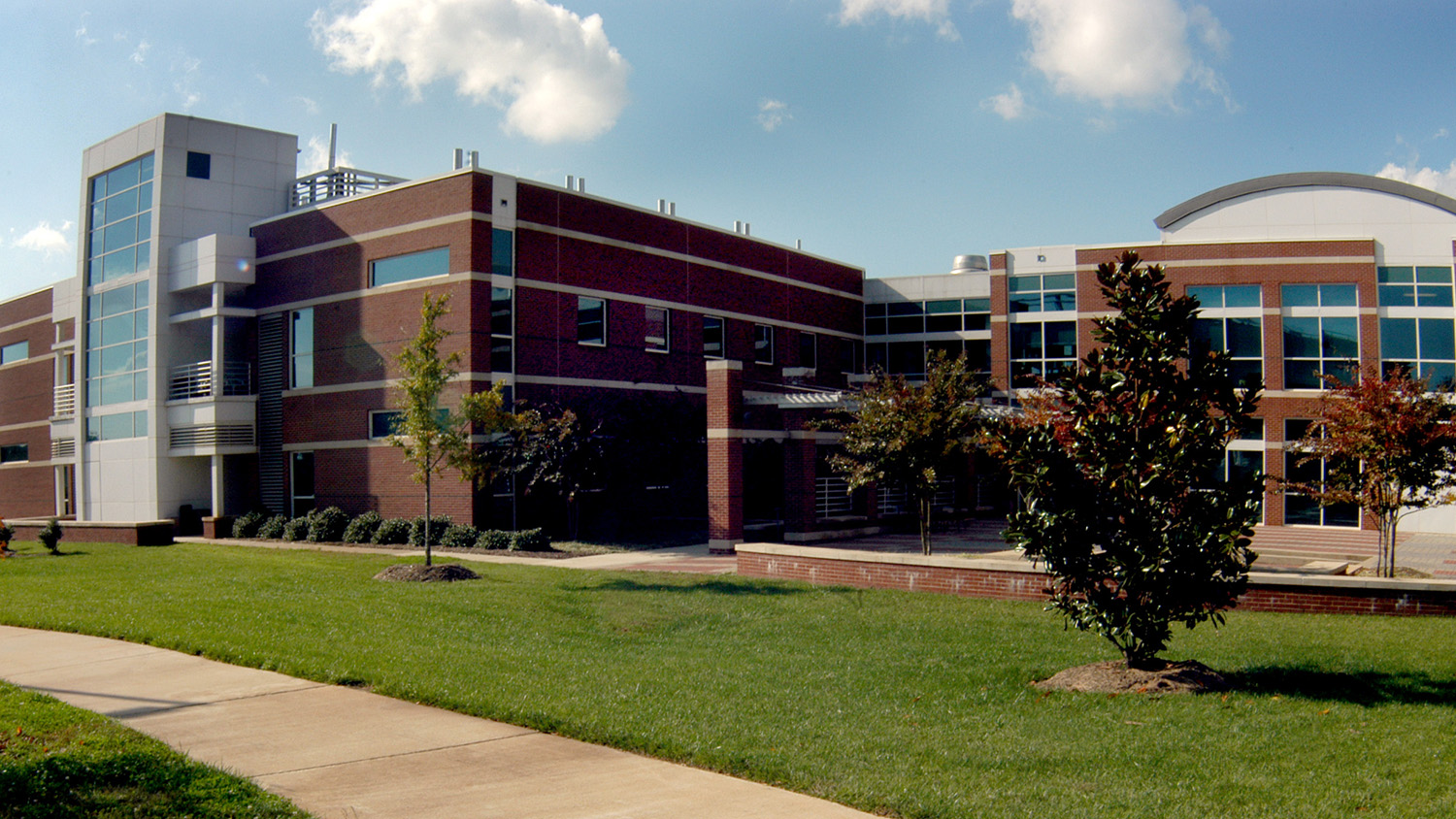Toxicology December 2023 Updates
Winter Break!
After a busy and productive semester, we wish everyone a happy and restful holiday. See you in the New Year!
Featured Stories:
Eren Cevik successfully defends!
On Tuesday, December 12, Sebnem Eren Cevik successfully defended her doctoral dissertation, “DNA methylation of imprint control regions in brain and blood associated with Alzheimer’s disease in non-Hispanic Blacks and non-Hispanic Whites.” Sebnem’s co-advisors are Dr. Antonio Planchart and Dr. Cathrine Hoyo.
Congratulations to Sebnem! We wish you all the best in the next step of your Toxicology career.
Featured Lab: Wang Lab
The Wang Single-Molecule Imaging Laboratory studies how proteins work together to shape and safeguard the genome. Specifically, the lab focuses on: 1) mechanisms of telomere maintenance; and 2) functions and mechanisms of action of the SMC family proteins. The lab uses state-of-the-art imaging techniques including high-speed atomic force microscopy (AFM) to study the dynamics of protein-DNA interactions, and the DNA tightrope assay to observe the movement of proteins along a DNA molecule. The goal is to understand how toxicants and other environmental factors can modulate these interactions leading to impacts on DNA repair and genome stability.
Meet the Team:

Hong Wang, PI
Hong obtained her PhD in Materials Sciences from the University of North Carolina in 2003 specializing in materials and biophysics. She then undertook postdoctoral training in DNA repair and single-molecule imaging at the NIEHS, and in telomere biology and single-molecule imaging at the University of Pittsburgh. She joined the Department of Physics at NC State in 2011 as an Assistant Professor, and is now a Full Professor and member of the Toxicology Program.

Elizabeth Irvin, Graduate Student in the Toxicology Program
Elizabeth is a third year PhD student and a Goodnight Scholar. Since joining the Wang lab in 2021, she has mastered single-molecule AFM and fluorescence imaging techniques. These skills helped her to uncover how members of the Methyl-CpG Binding Domain (MBD) protein family ‘read’ methylation marks on DNA, and to identify previously unknown DNA binding mechanisms by cohesin that are important for DNA repair. She has already made impacts in the DNA repair and single-molecule research fields through her publications and outstanding talks at the Genome Instability Gordon Research Conference and Cold Spring Harbor Single Biomolecule meeting. The next step in her research is to understand how Smc5/6 – members of the SMC protein family – help to process DNA repair intermediate structures, such as Holliday Junctions and R-loops. Her career goal is to apply her academic and research training in toxicology, genome maintenance, DNA repair and single-molecule imaging techniques towards a research career in genetic toxicology.
Featured Publication:
Lee HY, You DJ, Taylor-Just A, Tisch LJ, Bartone RD, Atkins HM, Ralph LM, Antoniak
S, Bonner JC (2023) Role of the protease-activated receptor-2 (PAR2) in the
exacerbation of house dust mite-induced murine allergic lung disease by multi-walled
carbon nanotubes. Part Fibre Toxicol., 20(1):32. Link
First author Ho Young Lee successfully defended his dissertation in the fall of 2022 and graduated from the Toxicology Program in December of 2022. He is currently a Postdoctoral Fellow at Emory University in Atlanta, GA. Co-authors Logan Tisch and Ryan Bartone are currently third year doctoral graduate students in the Toxicology
Program. Senior author Jamie Bonner is a Professor in the Department of Biological Sciences and a member of the Toxicology Graduate Program faculty.
Multiwalled carbon nanotubes (MWCNTs) are a type of engineered nanomaterial used in many products including composite construction materials and electronics. Human exposure occurs primarily in occupational settings where workers have the potential to inhale airborne MWCNTs. Previous work from the Bonner lab showed that MWCNTs
exacerbate allergic lung disease in mice provoked by the inhalation of house dust mite extract, which causes allergic asthma in humans. However, the molecular mechanisms through which MWCNTs exacerbate allergic lung disease have remained elusive.
In this study, Ho Young postulated that the protease-activated receptor-2 (PAR2) on professional phagocytes in the lung mediates exacerbation of allergic lung disease by MWCNTs. PAR2 is a G-protein-coupled receptor that is activated by a variety of proteases, including those found in house dust mite extract and plays a role in a variety
of diseases, including asthma. The pathogenesis of asthma involves activation of the innate and adaptive immune systems, leading to a complex disease phenotype featuring eosinophilic lung inflammation, airway mucous hyper-secretion and airway fibrosis. Ho Young and coworkers found that airway fibrosis induced by co-exposure to
house dust mite extract and MWCNTs was significantly reduced in PAR2 knock-out mice. Moreover, the reduction in fibrosis in the PAR2 knock-out mice was accompanied by a reduction in arginase-1, a protease that is linked to macrophage polarization.
Overall, the study demonstrated that MWCNTs produce strong pro-inflammatory and pro-fibrotic adjuvant effects in the presence of house dust mite extract doses and that PAR2 mediates the pro-fibrotic component of allergic lung disease. Dr. Jamie Bonner commented: “This work provided an important step in understanding the
mechanisms involved in the exacerbation of allergic asthma that could extend to a variety of other nano- and micro-particles in the environment, including those derived from wildfire smoke, which is an increasing problem linked to climate change. The findings are also important for identifying new molecular targets for the treatment of chronic asthma in humans, particularly the pro-fibrotic component of the disease for which there is currently no effective treatment.”
NC GEMS
Our Program was strongly represented at this year’s NC Genetics and Environmental Mutagenesis Society (GEMS) meeting in Chapel Hill. The theme of the meeting was Omics/Multiomics in Environmental Health. Shobhan Gaddameedhi is the outgoing president and played a central role in organizing the meeting, alongside Elizabeth Irvin who is a Councilor for the Society; Mike Cowley was an invited speaker; Gillian Szabo was one of a handful of trainees whose abstracts were selected for platform presentations; and Logan Dameris presented a poster. Two alumni of our Program also featured: Rubia Martin, now at the EPA, won best poster award; and Sierra Riegl, now at BASF, serves on the Board of Councilors.
Awards & Notable Events
Ashley Connors of the Yoder Lab is a recent co-winner of the Young Scholars Award from the NC State Comparative Medicine Institute. The proposal, titled “Developmental Toxicity Assessment of Fluorinated and Fluorine-free Firefighting Foams using the Zebrafish Model,” was written in collaboration with fellow graduate student Fatema Tuj Jahura in the Gluck and Ormond Labs (College of Textiles). This $9000 award provides summer research funding for an undergraduate student, co-mentored by Ashley and Jahura, along with a research supply budget for the proposed project and supplemental funds towards each of the graduate students’ dissertation projects.
Emma Hepworth, a PhD student in Jeff Yoder’s lab, was awarded the Carolinas-SETAC Dr. Pat McClellan-Green Student Travel Award to attend the national SETAC meeting in Louisville, KY. This award is in honor of one of CSETAC’s “most influential members” and a former NC State faculty member. Emma attended the annual SETAC North America meeting in November.
In September, Sean Cone, a PhD candidate, traveled to the 2023 EMGS Annual Meeting in Chicago, IL. Sean was selected to give a podium presentation, meaning his talk was selected from the many abstracts submitted. His presentation title was “Effects of clock disruption and UVB exposure on circadian behavior in SKH-1 mice”. Additionally, Sean was awarded the EMGS Travel Award presented by the Environmental Mutagenesis and Genomics Society, which is an award covering travel costs associated with attending the EMGS 2023 annual meeting. Well done Sean!
Aoi Nakanishi-Hester took home honorable mention in the 2023 NCSU Envisioning Research Image contest. Aoi, a CBS-DVM student in Jun Ninomiya-Tsuji’s lab, competed in the microscopy category. In her image, blue represents the cell nucleus, red represents neurons, and green represents astrocytes, a type of brain cell. By studying these cells, Aoi hopes to gain insights into the mechanisms underlying neuron death and memory loss in Alzheimer’s Disease.
Heather Patisaul’s postdoc, AJ Newell, has made his SECOND cover of Tox Sci this year! Heather reports, “to say he’s on a role is putting it mildly. He took Ben Reading’s Machine Learning class and the project exploded from there, so it’s truly his own ideas and work. Our toxicology trainees continue to excel in such an open interdisciplinary environment.”
